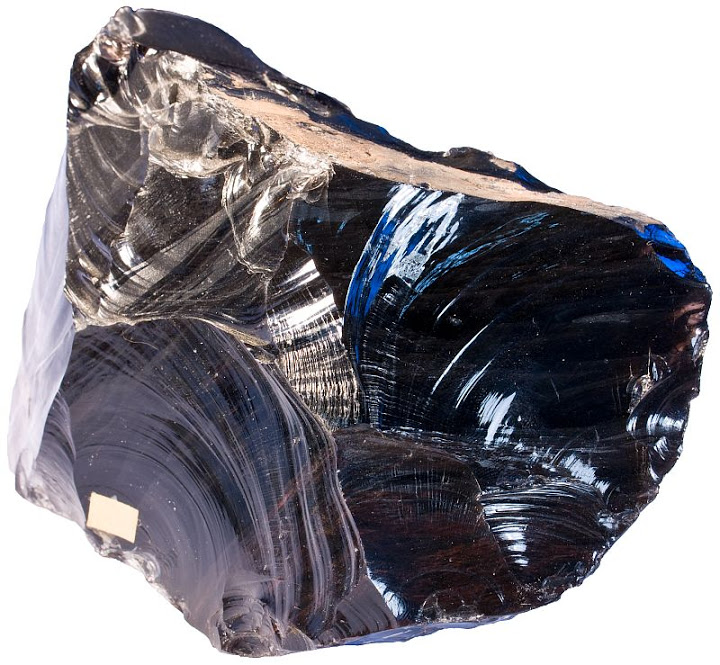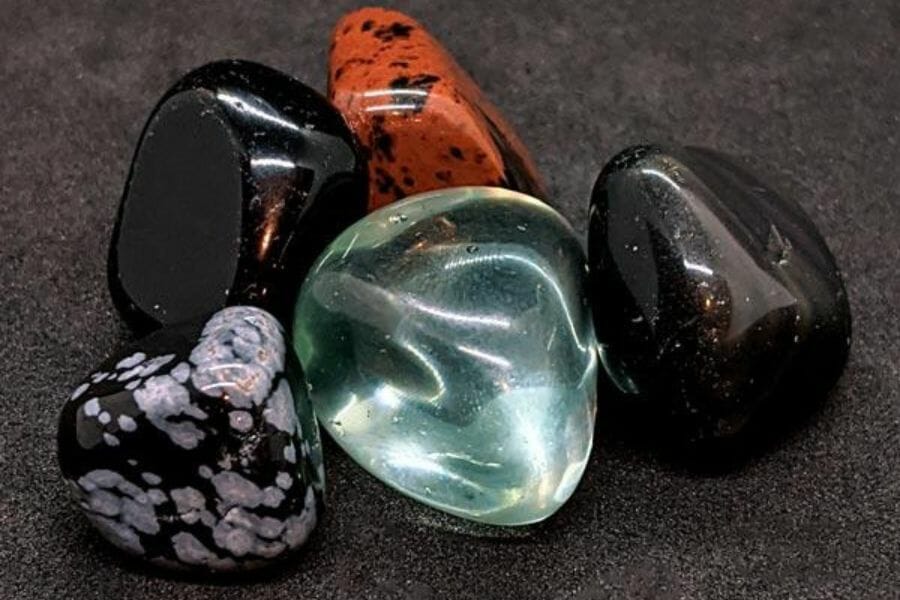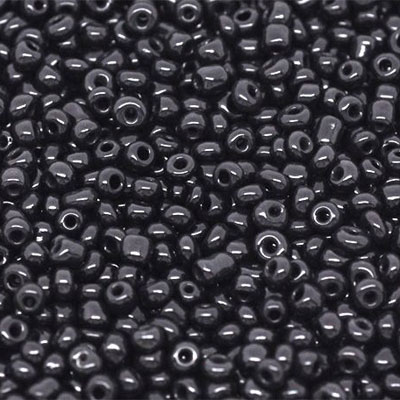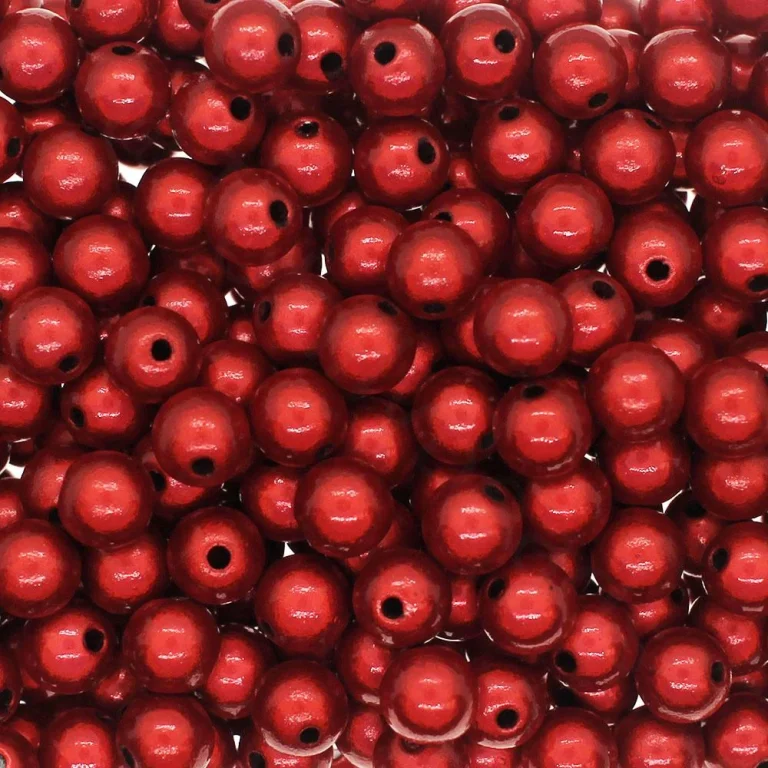Is Obsidian Expensive? How Much Does It Cost?
Obsidian has fascinated me ever since I first learned about this striking volcanic glass in my middle school Earth science class. Photos of obsidian’s gleaming black surfaces mesmerized me, and I was impressed by its significance to ancient civilizations all over the world. As an aspiring rockhound, I’ve always wondered: Is obsidian expensive?
In this article, I’ll share my research on obsidian value and prices. I’ll provide an overview of obsidian characteristics, examine what impacts the cost of obsidian, look at price ranges for different types, and offer tips for buying obsidian. Read on to learn all about this intriguing natural glass and get the answer to the question, “Is obsidian expensive?”
An Introduction to Obsidian
Contents
For those unfamiliar with obsidian, let’s start with an overview. Obsidian is a natural volcanic glass formed from rapidly cooled lava that is rich in silica. It has a smooth, glassy texture and is typically black, but can display other colors like brown, red, orange, or green.
Some key characteristics of obsidian:
- Amorphous (lacking crystalline structure)
- Hard, brittle, and easily fractured
- Usually opaque but can be semi-translucent
- Conchoidal (curved, shell-like) fracturing
- Often displays interesting inclusions and banding patterns
Obsidian’s properties allow it to be shaped into extremely sharp blades and tools. This made it invaluable to ancient civilizations for uses ranging from ceremonial objects to weapons. Archaeologists have found abundant evidence that ancient people traded obsidian across long distances.
In modern times, obsidian continues to be valued for its aesthetic qualities and metaphysical properties. It’s popular in jewelry and for carvings, knives, and arrowheads.
Now that we’ve covered some obsidian basics, let’s move on to discussing its value and cost.
What Impacts the Value of Obsidian?

There are several factors that influence the price tag on a piece of obsidian:
Rarity
Rare varieties or limited sources of obsidian understandably drive the prices up. For example, obsidian with an unusual color or pattern may be harder to come by and more expensive. Some types of obsidian are localized to certain geographic areas.
Quality
Higher quality specimens command higher prices. Characteristics like purity, clarity, few fractures or inclusions, and distinct banding can increase obsidian value. The overall aesthetics also play a role.
Color and Patterns
Vibrant colors and striking patterns make obsidian more desirable. For instance, vivid rainbow sheens or bold snowflake banding patterns are especially sought-after.
Size
In most cases, a larger size means a higher price tag. Larger pieces allow the full display of patterns and colors, and there is a limited supply.
Cut, Polish and Shape
Professional cutting, polishing, and shaping of raw obsidian into cabochons, spheres, carvings, etc. adds value from the labor and expertise.
Historical/Cultural Significance
Obsidian artifacts with a documented association to a certain culture or archeological context have added value.
Craftsmanship for Jewelry/Art
When incorporated into handcrafted jewelry or artworks, the skill of the artist is a major pricing factor.
Metaphysical Reputation
In healing crystals communities, obsidian is attributed with certain metaphysical powers. Unique specimens believed to have exceptional properties may fetch higher prices.
Demand and Availability
The basic economics of supply and demand impact obsidian pricing like any market. When demand is high and good supplies are scarce, expect prices to rise.
With this background info in mind, let’s survey some typical price ranges for different types of obsidian.
Obsidian Types and Price Ranges

Obsidian occurs in many varieties, each with their own unique look and price point. Here is an overview of some common types and what to expect to pay:
Black Obsidian
The most abundant and affordable type is basic black obsidian. A high-quality large specimen may cost $50-100. Small black obsidian stones and tumbled chips sell for $5-20.
Mahogany Obsidian
Distinctive mahogany obsidian with reddish-brown swirls demands a moderate premium. Polished pieces can cost $15-50.
Rainbow Obsidian
As the name suggests, rainbow obsidian displays colorful bands when light hits it. High grade large stones with vibrant rainbows are $75-200+. Smaller pieces are $20-60.
Snowflake Obsidian
This very attractive type features white speckled patterns resembling snowflakes on black. Large prime quality pieces can be $100-300. More common smaller stones are $20-75.
Silver Sheen Obsidian
Noticable silver reflective specks on the black surface increase the desirability and price of silver sheen obsidian. Expect to pay $50-150 for a top specimen.
Gold Sheen Obsidian
Similar to the silver, gold sheen obsidian shows shiny gold reflective inclusions. A first-rate large piece will be $75-200.
Apache Tears
These small rounded nodules of black obsidian get their evocative name because they resemble fallen tears. Prices range from $1-20 per stone, depending on size and quality.
Obsidian Arrowheads
Authentic ancient obsidian arrowheads are understandably expensive due to their historical significance and rarity. $100-300+ is typical. For arrowheads made from modern obsidian, expect prices of $15-75.
This covers some of the most popular varieties, but there are others like fire obsidian, obsidian snowflake, galaxy obsidian, etc. The unique properties of each type impact the pricing. For very rare specimens in prime condition, costs for collectors can reach into the thousands.
Tips for Buying Obsidian
If you’re interested in purchasing some obsidian, either as a collector or for use in jewelry or crafts, here are some tips:
- Buy from reputable sellers like gem shows, specialty shops, and well-analyzed online stores. They will have accurately identified and described merchandise.
- Beware of fake or synthetic obsidian. Yes, man-made and imitation obsidian exists. Look for sellers that guarantee natural stones.
- Carefully examine the obsidian, especially for cracks or flaws. Move it around in the light to see any patterns.
- Compare prices from different vendors to get the best deal based on the quality.
- Consider having extremely rare or expensive specimens appraised by a professional.
- Obsidian is fragile – handle gently to avoid chips and nicks that decrease value.
- Learn about metaphysical properties to pick obsidian that aligns with your intentions.
- For jewelry, buy obsidian cabochons or beads from suppliers using protective stabilization processes. This helps prevent cracking or crazing when exposed to moisture or chemicals during wearing.
Key Characteristics of Obsidian
Obsidian is a volcanic glass with several distinctive properties:
- It has a smooth, glassy texture and appearance. When fractured, obsidian breaks with a curved conchoidal fracture.
- It is typically opaque, with a black or very dark coloration, though some varieties have a dark green, brown, red, or blue hue.
- Obsidian lacks a crystalline structure and has an amorphous molecular structure due to its rapid cooling. This gives it a solid, non-granular texture.
- It has a hardness of about 5 to 5.5 on the Mohs scale, making it relatively easy to carve and work with. However, it is also brittle and prone to fracturing.
- Obsidian has very low water content, usually less than 1% by weight. This contributes to its brittleness.
- It has a high silica content (between 70% to 80%), which gives it a glass-like structure.
- It often contains inclusions of gas bubbles and microscopic mineral crystals, which can produce interesting visual effects like banding, mottling, or sheen.
Historical and Modern Uses of Obsidian
Thanks to its volcanic origins, obsidian has been used by humans across the globe for thousands of years. Some key uses include:
- Cutting Tools: Obsidian can be fractured to produce extremely sharp edges, making it ideal for cutting instruments like knives, arrowheads, and spear points. Obsidian blades can have a cutting edge only a few nanometers thick.
- Jewelry: Obsidian has been made into beads, pendants, and other decorative objects since ancient times. It was particularly popular in Aztec jewelry. Today it remains a popular ornamental stone.
- Mirrors: Polished obsidian creates a reflective surface. Mesoamerican civilizations fashioned it into mirrors and the Romans also used it for mirrors.
- Art: Obsidian’s glossy texture and fascinating patterns are aesthetically pleasing. It has been carved into beautiful works of art, masks, figurines, and decorative dishes.
- Ceremonial Objects: Obsidian held ritual significance in many ancient cultures because it could be shaped into sacred or symbolic forms. The Aztecs in particular used it for ceremonial weapons.
- Tools for Fine Work: In recent times, obsidian has been fashioned into surgical and dental scalpels because of its extremely fine cutting edges. It is also used in some precision scientific experiments and analysis.
- Metaphysical Use: Obsidian is believed to aid spiritual healing, release negativity, and bring protection. It remains popular for new age crystal work.
Obsidian is truly a unique and versatile natural material that has served humanity across vast stretches of time and geography. This volcanic glass continues to fascinate us today with its dark beauty and practical properties.
In Conclusion: Is Obsidian Expensive?
So in summary – is obsidian expensive? As a naturally occurring stone, the abundant common black obsidian is quite affordable. But scarce or superior quality types with vibrant rainbow sheens or dramatic patterns can get pricey. Unique craftsmanship also increases value for jewelry, carvings, and artwork. While not as precious as fine gemstones like diamonds or emeralds, exceptional obsidian specimens are an investment for serious collectors. I
hope this article gives you a helpful sense of obsidian costs. Feel free to contact me with any other questions!

Founded by Sophia Rodriguez, IGXO Cosmetics is a PETA-certified, cruelty-free, and vegan makeup brand.





